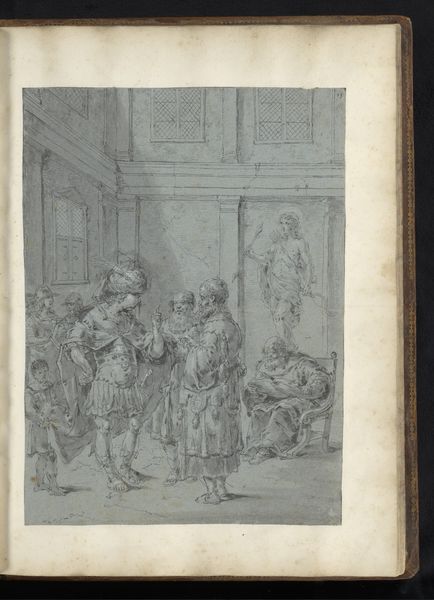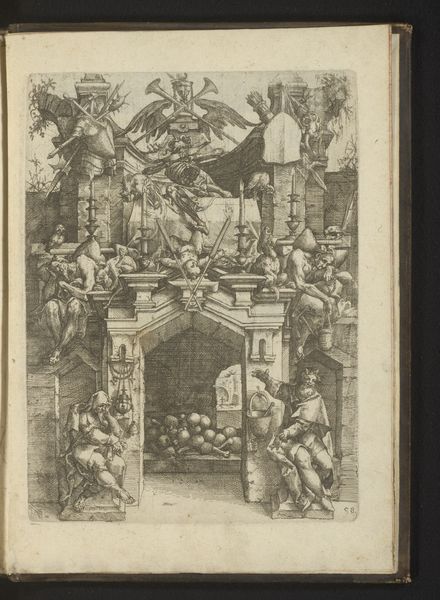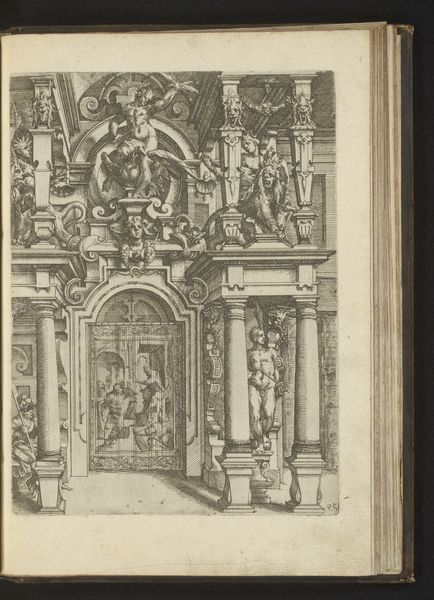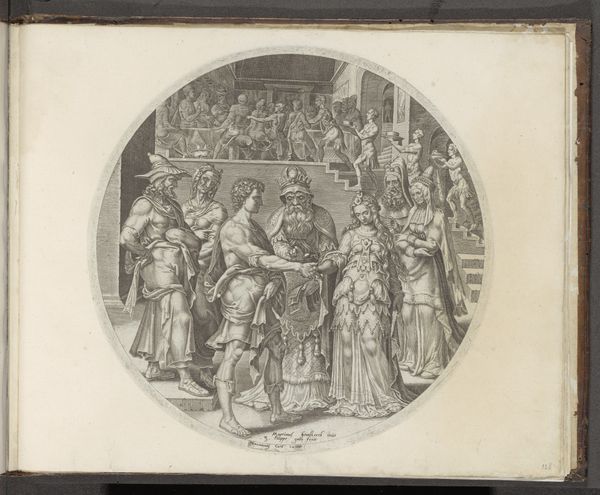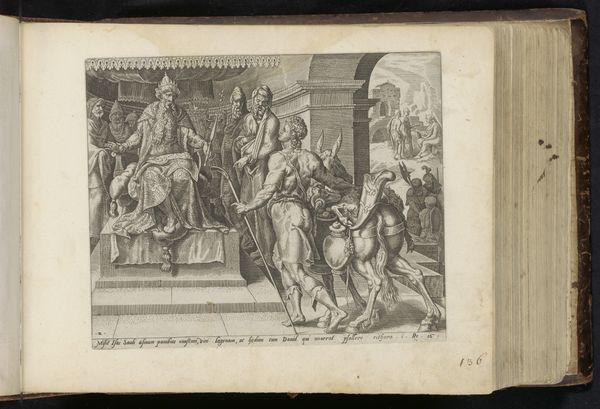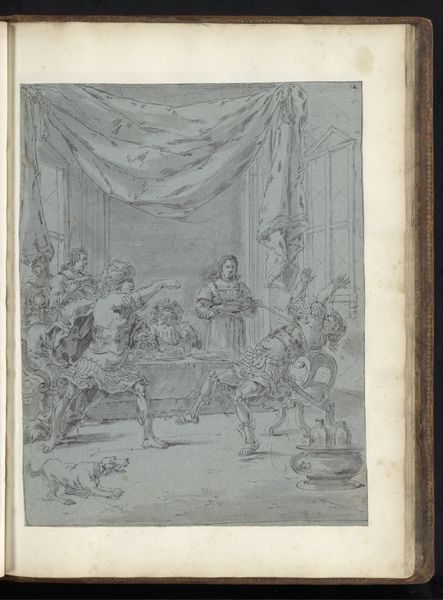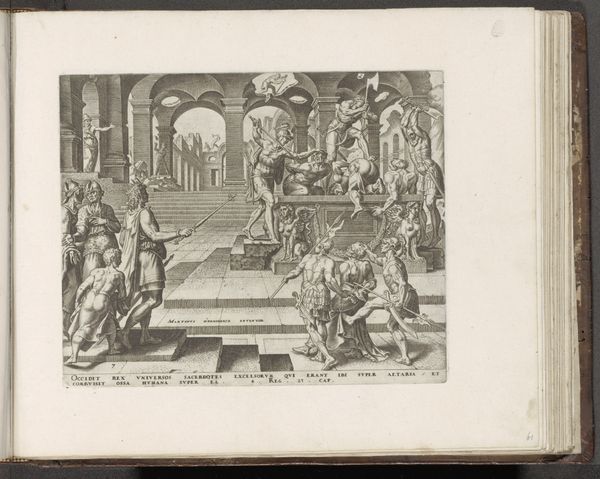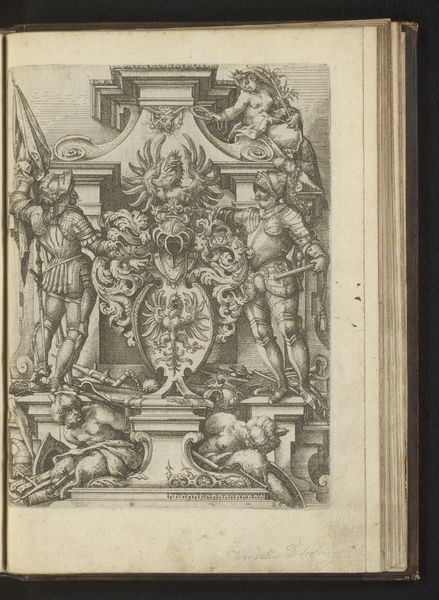
drawing, paper, ink
#
drawing
#
baroque
#
figuration
#
paper
#
ink
#
history-painting
Dimensions: height 414 mm, width 310 mm
Copyright: Rijks Museum: Open Domain
Curator: I'm immediately struck by the almost dreamlike quality of this piece. It's like looking into a hazy memory, a forgotten ritual. Editor: What we're observing here is a drawing by Leonaert Bramer, created somewhere between 1655 and 1665, currently residing at the Rijksmuseum. The work, in ink on paper, depicts "Alexander the Great Making an Offering to Diana." It's a wonderful example of Baroque figuration. Curator: Baroque, yes, but filtered through… something melancholic? There's so much implied, yet the linework feels light, airy. I sense an urgency to the narrative without the bombast often found in historical depictions. Look at the expressions—or lack thereof—on those figures. It’s more muted psychology, I think. Editor: I would argue that’s where Bramer’s artistic license takes hold, consciously or not. He positions Alexander in an act of apparent reverence—sacrificing to a female deity. However, in reality, his power was extracted by systematically subjugating female divinity to the dominant male narrative and expanding his imperial influence. Curator: Subverting expectations even in what he chooses to leave out, wouldn't you agree? The muted tones certainly serve to question grandiosity! A lot of these baroque depictions become so full of their own ego they turn into unwatchable visual clutter. Editor: Precisely! We have this historical drawing, yet the scene's deliberate vagueness is interesting to ponder. How are we to approach history critically? Can this be read as a direct comment of sorts? How Bramer shows Alexander might reflect 17th-century European perspectives on conquest, power, gender and divinity and prompt consideration about the historical forces, philosophical dimensions, and cultural shifts. Curator: You are leading my mind onto some fascinating paths…I might consider if the sacrifice is actually a request, a bargain even. Alexander the Great attempting to persuade divine intervention to continue on the successful path for his growing kingdom. Editor: Well, however we may interpret this, the sketch allows the audience to ponder how Alexander's conquests influenced perceptions of divinity and identity within his dominion, underscoring enduring legacies and sociopolitical currents across epochs. Curator: Bramer has woven a fascinating space with his brush that is less about Alexander, and more so about this fleeting human intersection with destiny. A beautiful mystery indeed! Editor: Indeed, a space rich for consideration about intersectional histories that extend through centuries of dialogue.
Comments
No comments
Be the first to comment and join the conversation on the ultimate creative platform.
